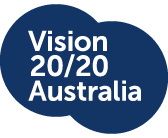State of eye health in our region
Globally 223.4 million people are blind or vision impaired. In addition, 517 million people globally are vision impaired from Presbyopia, which is correctable with a pair of glasses. Around 80 percent of all blindness and vision impairment globally is avoidable or treatable. As eighteen of Australia’s closest neighbours are developing countries, and with 90 per cent of people with vision impairment living in developing countries, the challenge is large and is very close to home.
Women account for approximately 64 per cent of all blind people globally, and in some countries, women and girls are only half as likely as men to be able to access eye care services.
One in five of the world’s poorest people live with a disability and are often excluded from communities, public health services and development programs. This exclusion increases their vulnerability to poverty and creates a vicious cycle of poverty and disability.
What needs to be done?
Since the VISION 2020: The Right to Sight global initiative was launched in 1999, blindness prevalence has significantly decreased in the Indo-Pacific region, with a 38.5 per cent reduction from 1.3 per cent to 0.8 per cent in the Pacific and a 43 per cent reduction from 1.4 per cent to 0.8 per cent in Southeast Asia. This is remarkable given there has been a 23 per cent increase in population across the region.
But while this improvement is a step in the right direction more needs to be done, including increased commitment in eye health prevention, treatment and vision care programs from national governments and donors to support the elimination of avoidable blindness.
The good news is that Australia is well placed to help eliminate avoidable blindness and vision impairment in our region and provide inclusive development for those whose vision impairment is untreatable.
In order for Australia to continue to support its neighbours, the Australian Government needs to also play its part in this.
The benefits
There are now mechanisms in place for significant progress to be made in the elimination of avoidable blindness. If there ever was a time to yield a positive return on investment and make a real impact on the lives of some of the poorest people in our region, it is now, especially because:
- poverty is being reduced
- eye health can target the poor and most vulnerable
- it makes good economic sense
- Australia can build on its international reputation.
Research has shown that interventions to improve eye health in developing countries are among the most cost-effective public health programs available returning $4 for every $1 invested.
